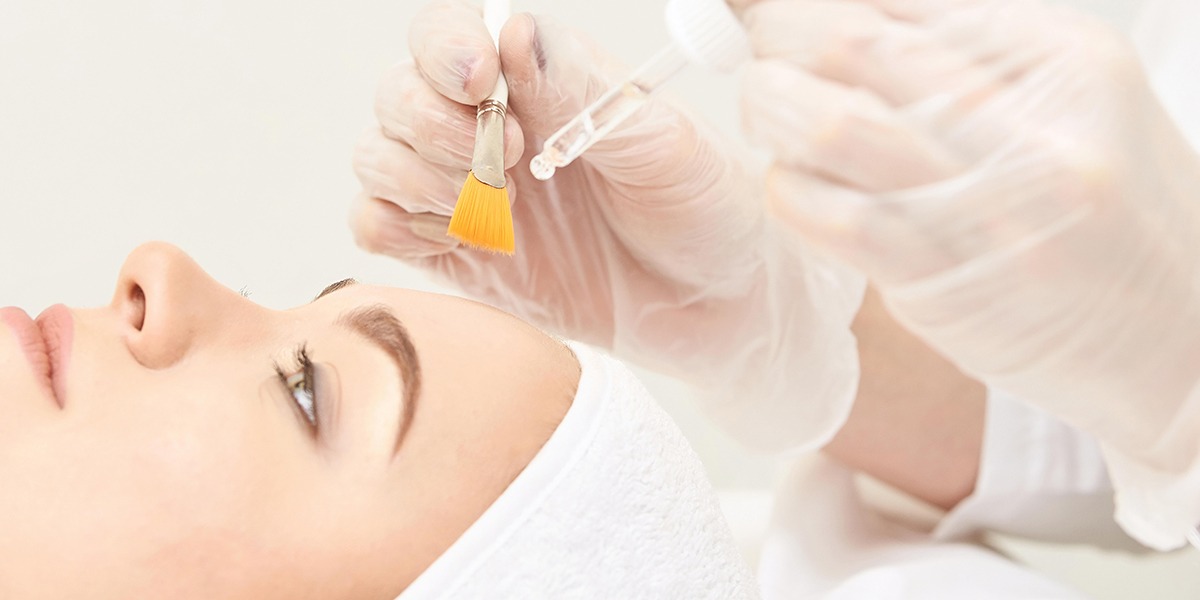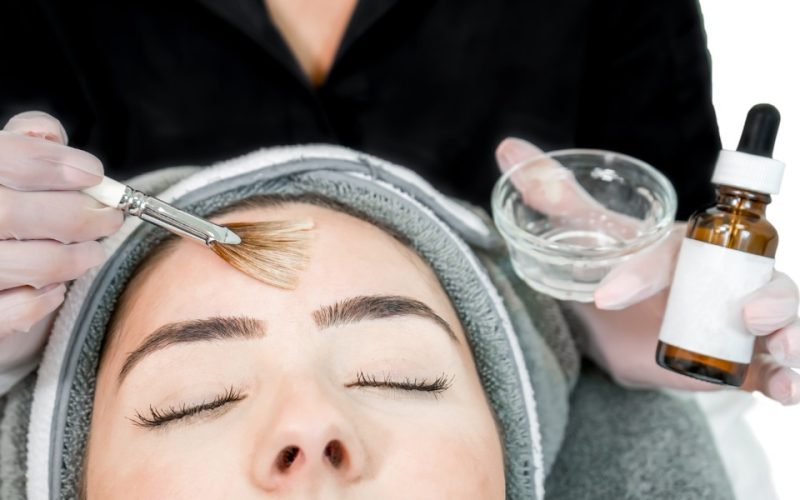Advanced Chemical peel treatment has revolutionized skincare, offering advanced solutions to various dermatological concerns. This comprehensive guide explores the transformative benefits of advanced chemical peel treatments and addresses common questions and concerns regarding their application and results.
Understanding Advanced Chemical Peel Treatment
Advanced chemical peel treatment involve the application of specialized chemical solutions to the skin, inducing controlled exfoliation and promoting skin regeneration. These treatments target specific skin concerns, including pigmentation, acne scars, fine lines, and uneven texture, resulting in smoother, brighter, and rejuvenated skin.

Types of Chemical Peels
Chemical peels are categorized based on their depth of penetration and the types of acids used. Superficial peels, such as alpha hydroxy acid (AHA) peels, gently exfoliate the outermost layer of the skin, while medium and deep peels, like trichloroacetic acid (TCA) and phenol peels, penetrate deeper layers to address more severe skin issues.
Benefits of Advanced Chemical Peel Treatment
Advanced chemical peel treatments offer a myriad of benefits, including improved skin texture, diminished fine lines and wrinkles, reduced hyperpigmentation, and enhanced overall skin tone. These treatments promote collagen production, leading to firmer, more youthful-looking skin with long-lasting results.
How Chemical Peel Treatment Works
During a chemical peel treatment, the selected solution is applied to the skin, causing controlled injury to the targeted area. This stimulates the body’s natural healing process, triggering the production of new skin cells and collagen. Over time, the old, damaged skin peels away, revealing smoother, healthier skin underneath.
Who Should Consider Chemical Peel Treatment?
Chemical peel treatments are suitable for individuals looking to address specific skin concerns, such as pigmentation issues, acne scars, sun damage, and signs of aging. However, individuals with certain medical conditions, such as eczema or rosacea, may not be suitable candidates for chemical peels.
Risks and Side Effects
While chemical peel treatments are generally safe, they may carry some risks, including temporary redness, swelling, and sensitivity. In rare cases, more severe side effects such as scarring and infection may occur. It’s essential to consult a qualified dermatologist or skincare specialist to assess your suitability for treatment.
Preparing for a Chemical Peel
Prior to undergoing a chemical peel treatment, patients are advised to prepare their skin by avoiding sun exposure, discontinuing the use of certain skincare products, and disclosing any medications or medical conditions to their provider. Following pre-treatment guidelines helps optimize results and minimize the risk of complications.
What to Expect During Treatment
During a chemical peel session, the skin is thoroughly cleansed, and the selected solution is applied evenly to the treatment area. Patients may experience a tingling or burning sensation, which subsides after a few minutes. The duration of the procedure varies depending on the type and depth of the peel.
Aftercare
Post-treatment care is crucial for ensuring optimal results and minimizing downtime. Patients are advised to follow specific skincare routines, avoid sun exposure, and protect their skin with sunscreen. Mild redness and peeling are common after-effects, which typically resolve within a few days to reveal radiant, rejuvenated skin.

FAQs
Can chemical peel treatments be customized to suit different skin types?
Yes, chemical peel treatments can be tailored to address various skin concerns and accommodate different skin types, including sensitive or acne-prone skin.
Are chemical peel treatments painful?
While patients may experience a mild tingling or burning sensation during treatment, discomfort is typically minimal and well-tolerated. Providers may offer topical anesthetics to enhance comfort during the procedure.
How soon can I see results after a chemical peel treatment?
Results from chemical peel treatments are gradual and may vary depending on the type and depth of the peel. However, many patients notice improvements in skin texture and tone within a few weeks, with continued enhancement over several months.
Are there any long-term benefits to undergoing chemical peel treatments?
Yes, chemical peel treatments offer long-term benefits beyond immediate results. By stimulating collagen production and promoting skin renewal, these treatments contribute to sustained improvements in skin texture, firmness, and overall appearance.
Can chemical peel treatments be combined with other cosmetic procedures?
Yes, chemical peel treatments can be combined with other cosmetic procedures, such as microdermabrasion, laser therapy, or injectable treatments, to achieve comprehensive rejuvenation and address multiple skin concerns simultaneously.
What precautions should I take before undergoing a chemical peel treatment?
Before undergoing a chemical peel treatment, it’s essential to consult a qualified skincare professional to assess your candidacy, discuss your medical history, and review pre-treatment instructions. Additionally, patients should discontinue the use of certain skincare products and avoid sun exposure to prepare their skin adequately.
Conclusion
Advanced chemical peel treatment offer a safe, effective solution for addressing a wide range of skin concerns and achieving radiant, youthful-looking skin. By understanding the process, benefits, and aftercare guidelines associated with chemical peel treatments, individuals can make informed decisions to enhance their skin health and confidence.












